The chickadee has approximately 7 types of songs that are used in several circumstances from mating to warning calls. The most popular chickadee song is the dee-dee-dee, heard year round; it can indicate having found a good food source or just general bird chatter. The fee-bee call is used in mating rituals.
Even for novice bird watchers, the chickadee call is one of North America’s most recognizable bird calls.
Let’s dive into the different calls that chickadees make and how to use simple auditory clues to determine what they mean.
How Many Different Calls Does A Chickadee Have?
The chickadee has seven bird calls that indicate anything from warning calls, mating calls, and just general chit-chat between birds.
Below are some of the different calls of the chickadee and what they’re trying to say.
1. Chickadee-Dee-Dee Call
The chickadee-dee-dee call is a series of dee’s that their most recognizable tune. It’s not only heard in the breeding season but also during the stillness of the winter.
Even inexperienced birders can quickly identify this very recognizable dee-dee-dee tune. So, what are they trying to say, exactly?
The dee-dee-dee call is common among chickadees because it’s how they communicate. It’s a way to find other chickadees in a group or call out a stellar food source.
If you watch these birds at your backyard feeders, they like singing their dee-dee-dee tune as they bury a sunflower seed in a nearby branch. Their dee-dee-dee call is a way to tell fellow chickadees about an excellent food source they discovered!
2. Dee-Dee-Dee Warning Call
The classic dee-dee gets a little more frantic if there is danger afoot. If you are unsure whether a chickadee is delighted or frightened, simply count the number of dee-dee-dees. A happy chickadee call consists of around 4 to 5 dees. If that number increases, it likely means that the chickadee is aware of a predator nearby.
In some instances, the dee calls increase to 12 consecutive dees in rapid succession if they see a predator or their nestlings are in danger.
3. Fee-Bee Call
The very distinct two-note fee-bee call is a way for a male chickadee to attract a female. Unlike the dee-dee-dee call that is heard year-round, the fee-bee call is only heard during mating season. It has two piercing and distinct pitches that effortlessly cut through the chatter of nearby songbirds.
If you hear a fee-bee call in your backyard, it’s one of spring’s first signs!
It’s also a way for male chickadees to proclaim their territory and tell other chickadees to back off.
4. Gargle Call
The gargle call is a bizarre bird sound these tiny songbirds make. It sounds like a blend of notes in a peculiar gargling pitch. It has a lower pitch, which isn’t as easy to draw out in a crowd of other songbirds.
The gargle call is another way to tell fellow chickadees to back off their territory. It’s often heard when chickadees congregate around a food source, such as a suet feeder.
It’s not super common among chickadees, but it can be heard when they start to feel like their territory is being threatened.
5. Contact Call
You must listen carefully to pick up the chickadee’s contact call. The contact call is a series of very polite chirps that they use to communicate with each other. Chickadee flocks stay close together throughout the year, and the faint chirps are a way of staying in contact with each other as they hunt for food sources.
Think of the contact call as a game of marco polo. These subtle chirps help flocks keep track of each other and indicate that everything is alright.
When the chirps in their contact call vocalizations abruptly stop, it often means that there is a predator nearby.
6. Fledgling/Begging Call
Once a nestling leaves, it isn’t entirely equipped with the tools needed to find food on its own. Even after young chickadees leave the nest, they still require assistance from their parents for food.
The fledgling call consists of a series of quivering chirps and dee-dee-dees in rapid succession, accompanied by fluttering wings.
If you hear a fledgling call, sometimes also called a begging call, it only lasts for a short while and stops when the parent brings them food.
7. Hawk Alarm Call
The chickadee has a very interesting way of sounding the alarm when a hawk is nearby. If you listen very closely, a few cues indicate chickadees are announcing a threat.
First of all, their contact calls come to a sudden stop. Chickadees that communicate with each other with soft chirps stop abruptly when there is a haw nearby. After the brief silence, they start sounding the alarm.
The chickadee alarm call sounds similar to the dee-dee-dee call, albeit a little more urgent. It’s as if they reach into their bag of bird songs and pull out everything from chirps, gargles, and dee-dee-dees to alert nearby birds of a threat.
It’s All About The Pitch
So, what are those chickadees in your backyard talking about? The pitch of their calls is a great way to determine what they’re trying to communicate. Chickadees make dee-dee-dee, fee-bee, gargling, and chirping calls and the pitch of these calls is a great way to decipher their bird code.
For instance, the dee-dee-dee call is higher in pitch when a predator is looming about. The high pitch call is a great way to warn other birds without giving away their location. They also use a higher-pitched dee-dee-dee call when alerting nearby flocks of an excellent food source.
When their calls are lower in pitch, it often means that chickadee is communicating with each other. They often emit a lower-pitched dee-dee-dee call while in flight, or congregated around a birdfeeder.
Are There Any Differences in Sounds Among Various Chickadee Species?
Different species of chickadees have distinct vocalizations, allowing birdwatchers and ornithologists to identify them based on their calls and songs.
Here are some of the differences in sounds among various chickadee species:
- Black-capped chickadee (Poecile atricapillus):
- Chick-a-dee-dee-dee: The most distinctive call, with a variable number of “dee” notes. The number of “dee” notes can convey information about the level of threat or excitement.
- Fee-bee or Hey-sweetie: A two-part whistled phrase used during courtship and pair bonding.
- Song: A sweet, warbling song with whistled notes and trills.
- Carolina chickadee (Poecile carolinensis):
- Chick-a-dee-dee-dee: Similar to the black-capped chickadee but often with fewer “dee” notes.
- Mountain chickadee (Poecile gambeli):
- Chick-a-dee-dee-dee: Similar to the black-capped chickadee but often with a slower and more deliberate delivery.
- Boreal chickadee (Poecile hudsonicus):
- Chick-a-dee-dee-dee: Similar to the black-capped chickadee but often with a lower-pitched and more nasal quality.
- Chestnut-backed chickadee (Poecile rufescens):
- Chick-a-dee-dee-dee: Similar to the clack-capped chickadee but with slightly different vocalizations and patterns.
- Gray-headed chickadee (Poecile cinctus):
- Chick-a-dee-dee-dee: Has a similar call structure to other chickadee species, but with regional variations.
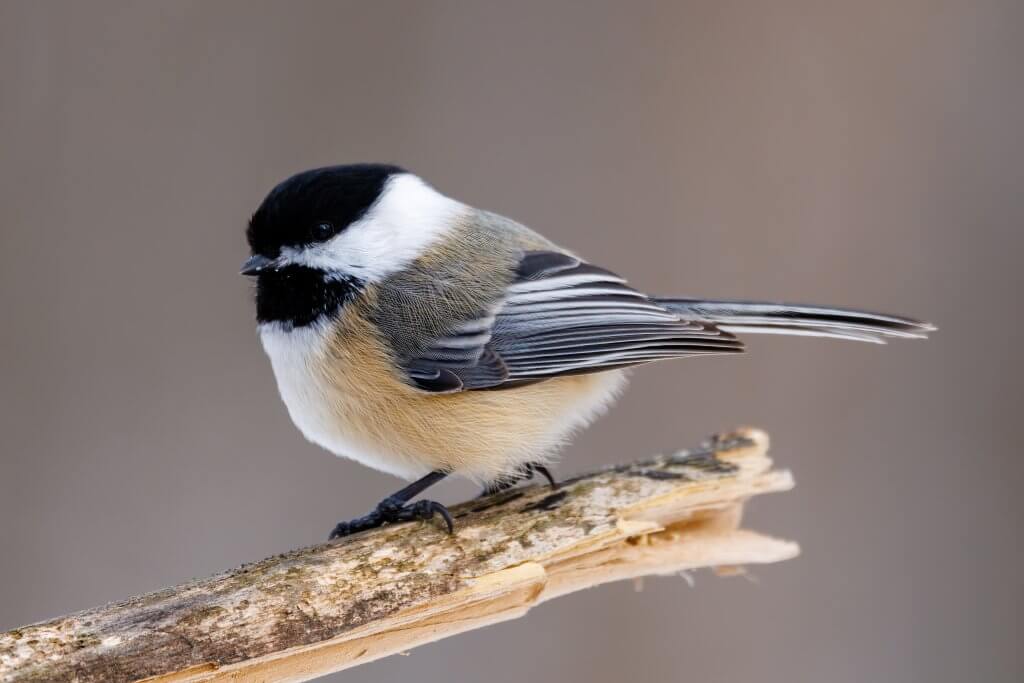
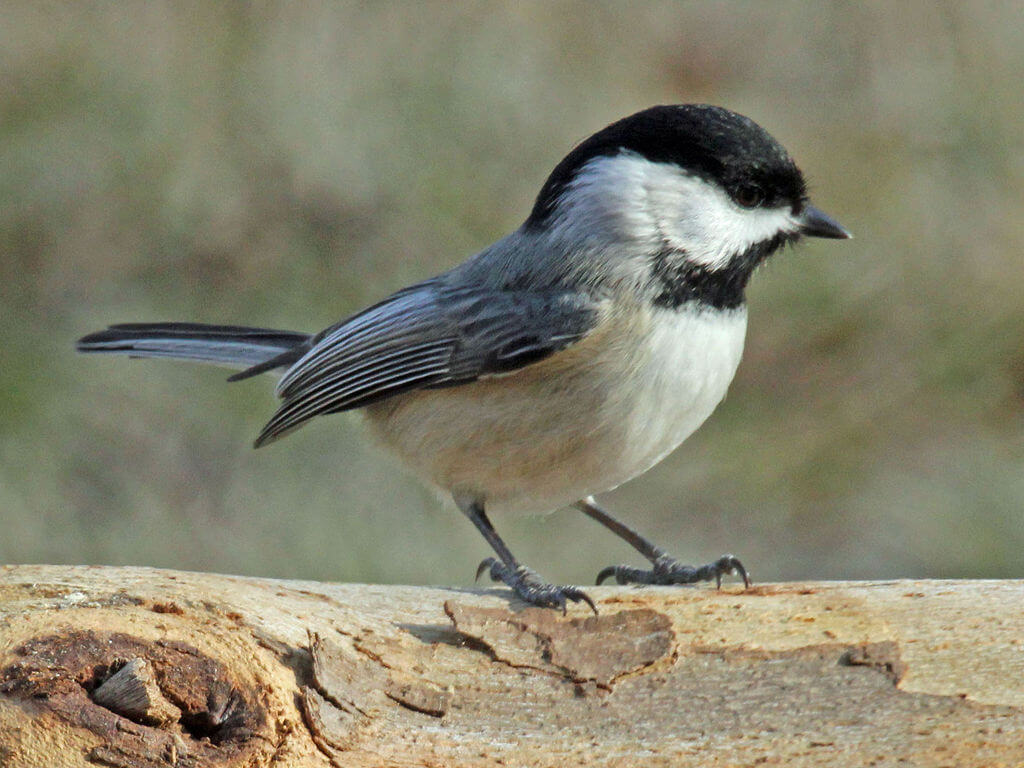
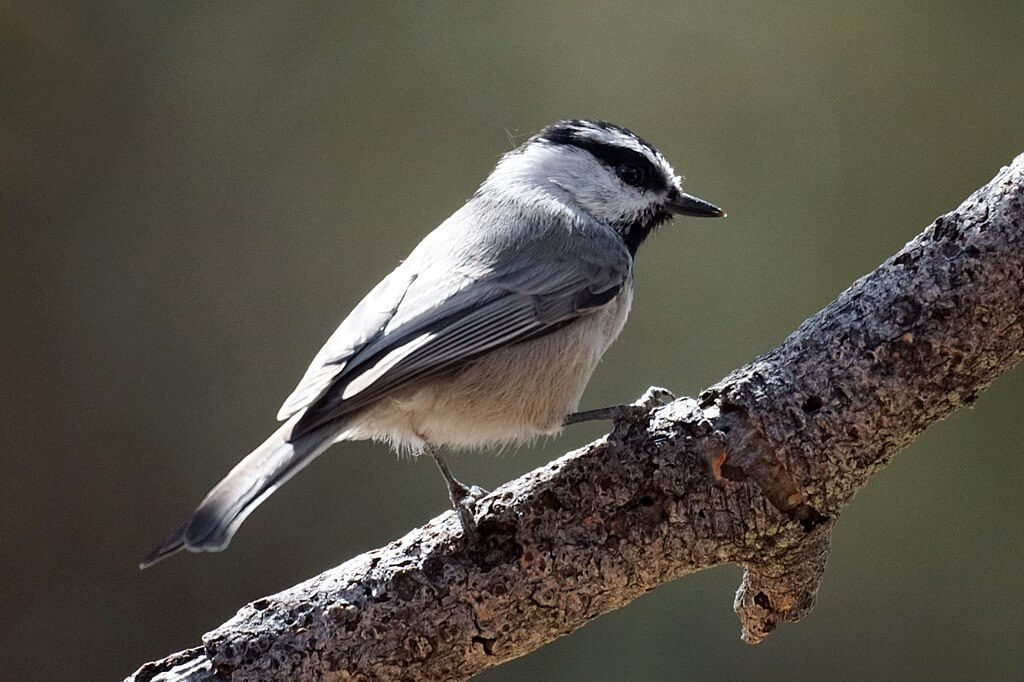
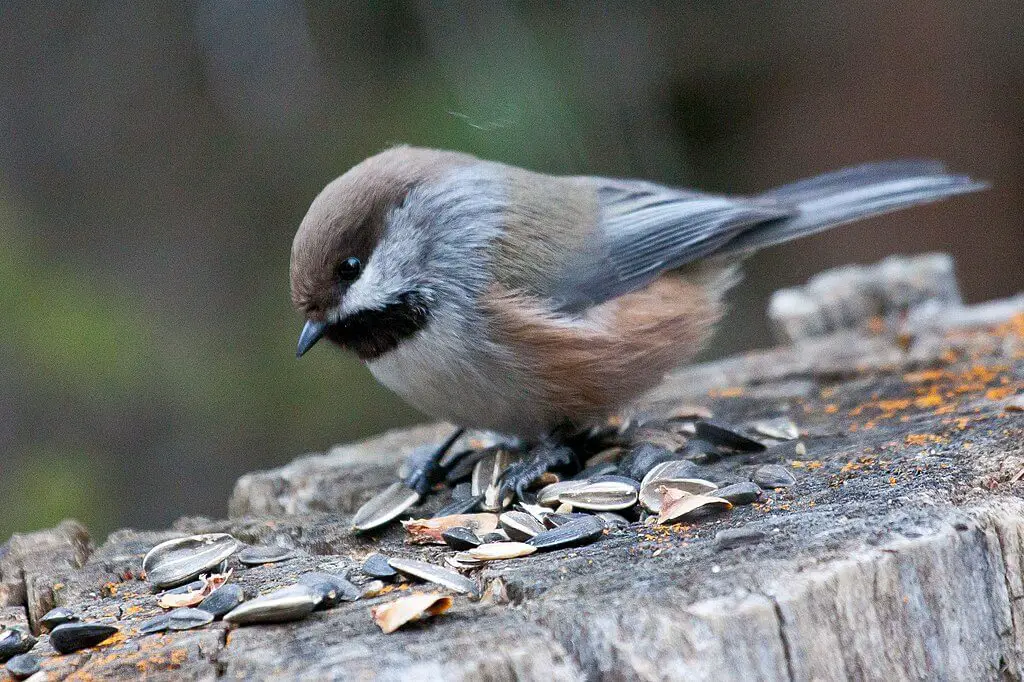
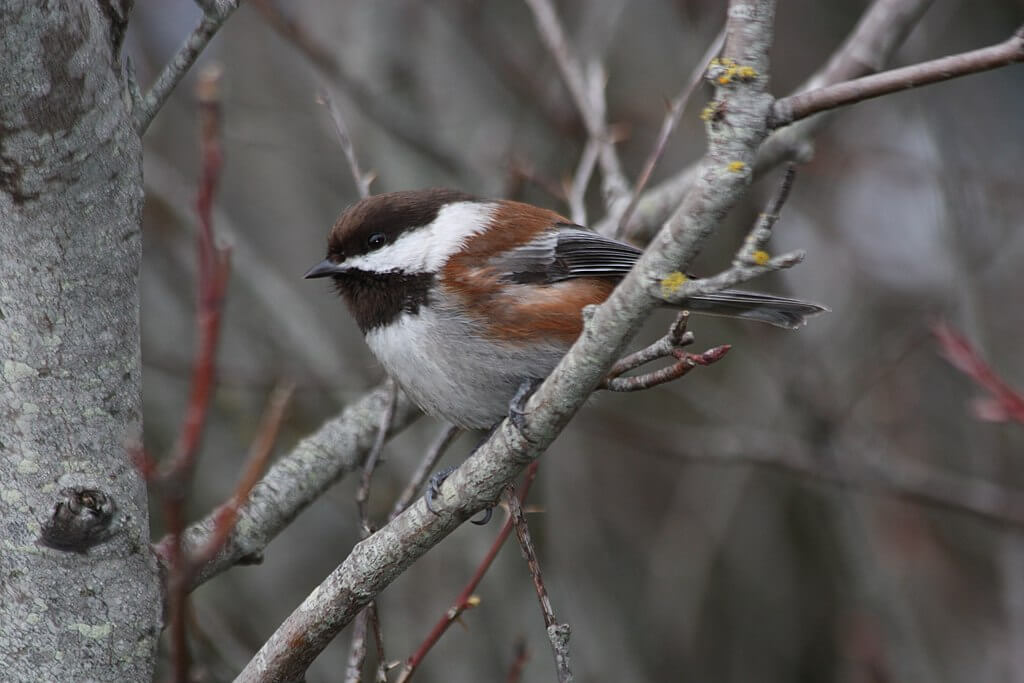
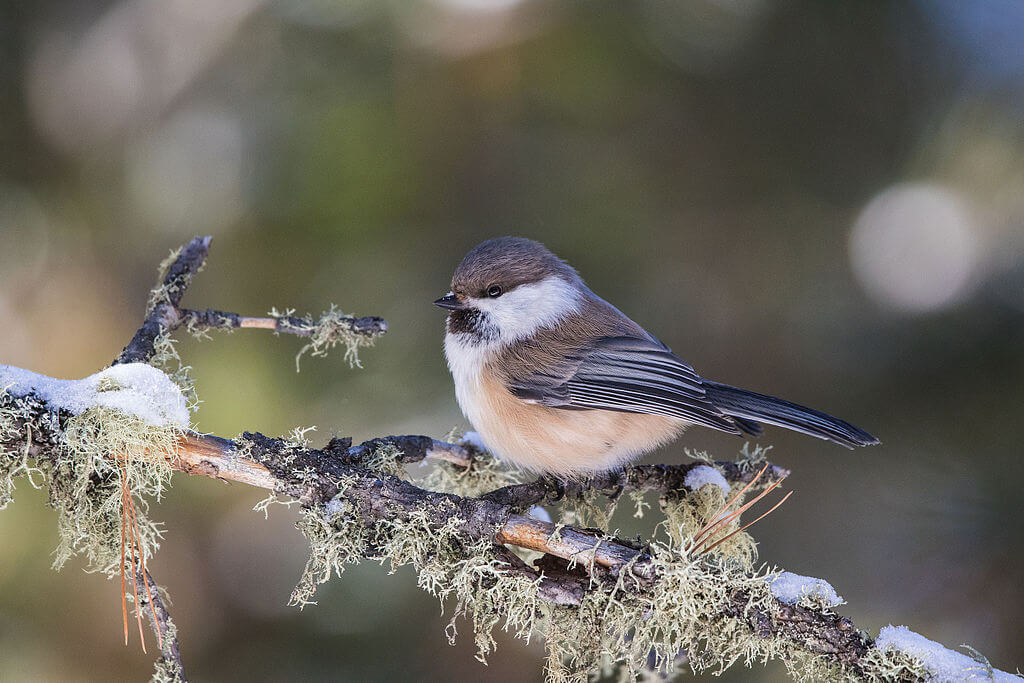
It’s important to note that the vocalizations of each chickadee species may vary depending on regional dialects and individual bird variations. Also, some chickadee species have overlapping ranges and might share similar habitats, so identifying them accurately can sometimes be challenging.
Birdwatchers often use a combination of visual cues, habitat preferences, and vocalizations to distinguish between different chickadee species in the field.
What to read next: Chickadee Birdhouse: The Best Type And How To Build One

